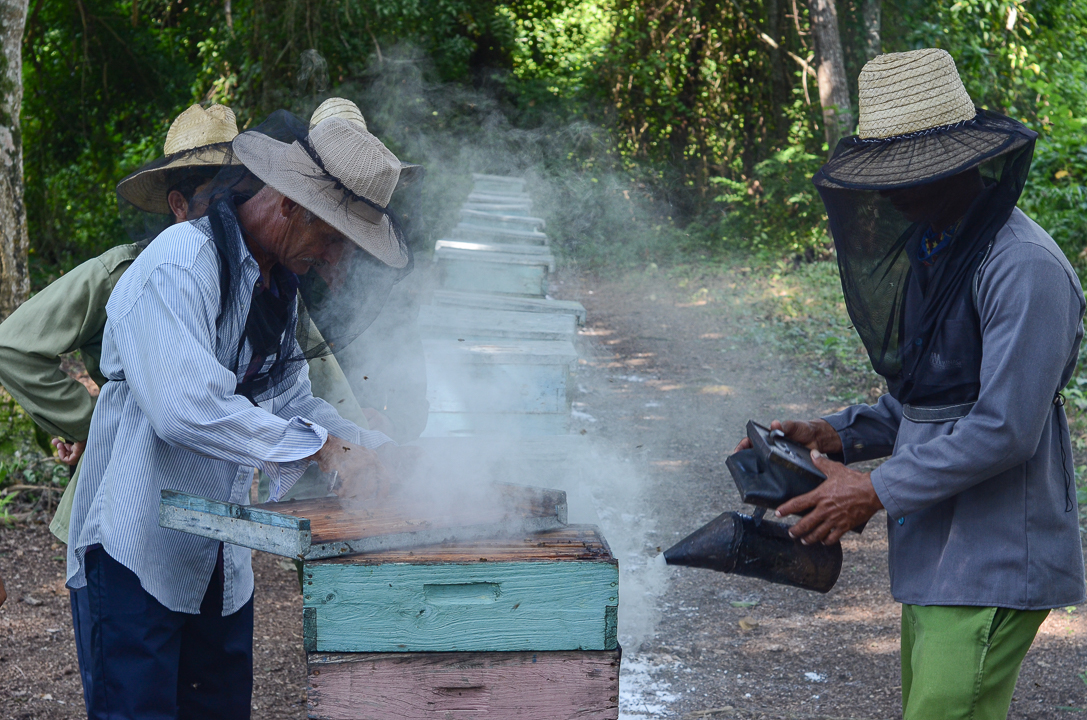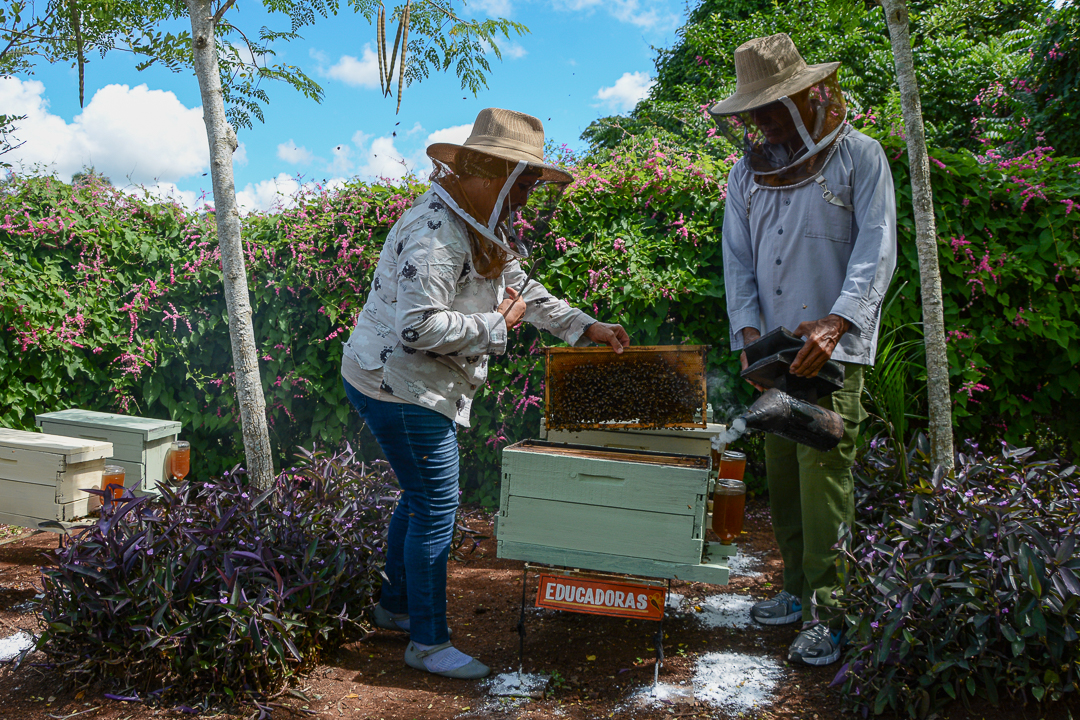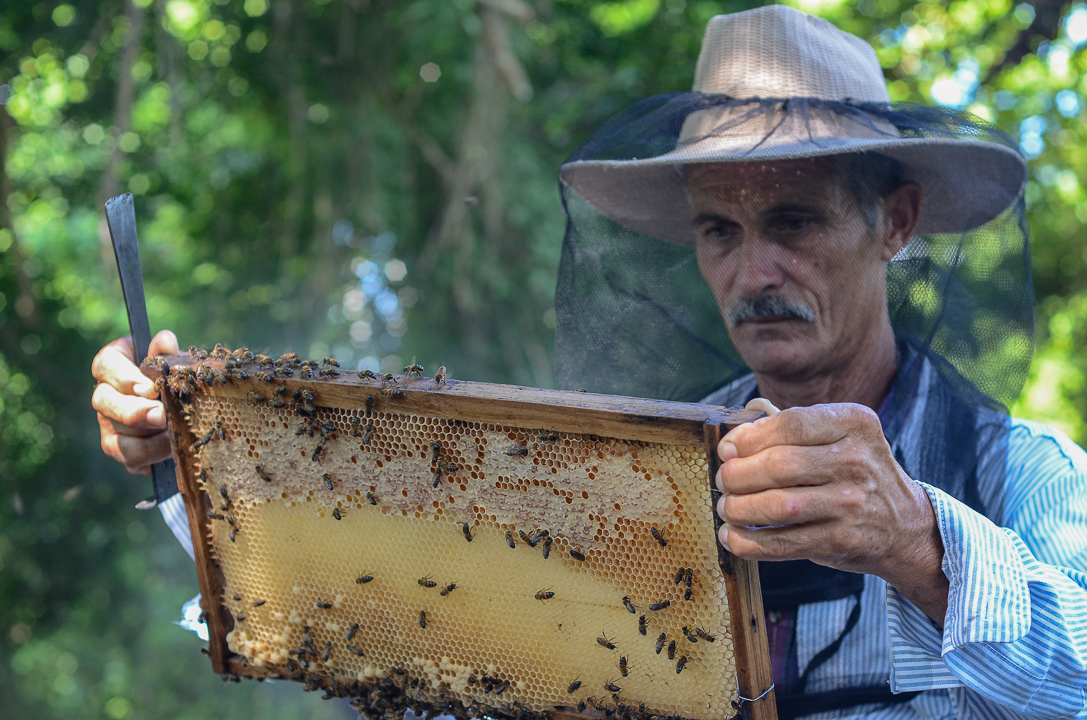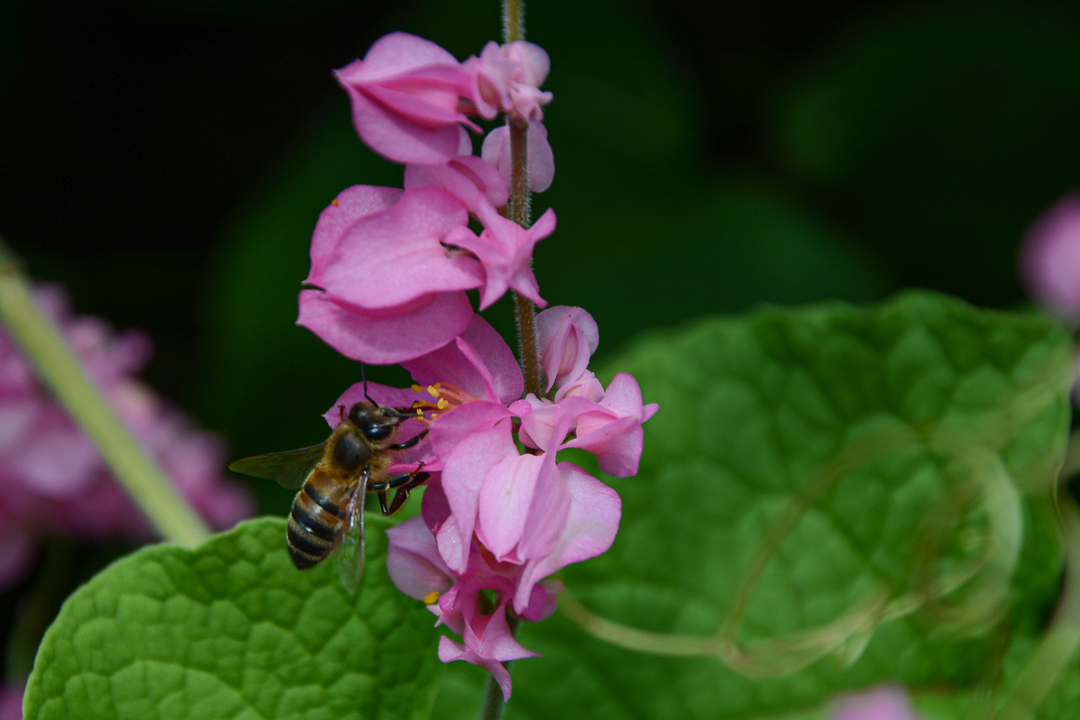CAMAGÜEY.- The benefit of bees is usually measured according to the products that come directly from them. Honey is, of course, the most popular. These incredible insects are much more than the famous amber substance because they depend on the pollination of 70 of the 100 species of crops that provide 90% of the world's food.
In the fields of Camagüey, as in the rest of Cuba, the genus Apis finds safe refuge and wild blooms. Their reality is very different in other regions of the planet where their populations have suffered a drastic decrease in recent years due to extensive agriculture practices and meteorological phenomena as a result of climate change.

NORTH HONEYS
The flowers of the Indian liana are already peeking out over the treetops. This climbing plant has “besieged” the Los Sánchez apiary. It bodes well for the beekeepers of the Jorge Fernández Bello apicultural basic unit of cooperative production (UBPC).
After the Indian, the landscape will be painted with white and purple bells; from whose blooms (from October to December) 50% of the honey of the year is obtained in the province, with optimum quality for export.
Far away is the San Juan de Dios community, 12 kilometers from the municipal seat of Esmeralda, much more intricate are the 18 apiaries with the 538 beehives of the UBPC, one of the four that in the territory is dedicated to this line. Alexis Hernández Ares, its president, assures that despite the drought that affected the northern region of the province in this calendar, there will be no difficulties in complying with the 22 tons of honey planned, the 385 kilograms of wax and 40 of propolis.
The greatest guarantee for the productive base is its people: stable, mostly young and committed. Adrián, Eduardo, Oscar, Antolín and Yunieski hit with both hands, the same heavy hives carry on their backs in the transhumance towards the coast, which repair whatever is needed or put lime in front of the pike holes to avoid mites.
The work is hard, always in distant places, with a lot of plague, in addition to the latent risk of suffering the painful bites. However, the boys say that as incredible as it may seem, they already like beekeeping. They insist that things must be done well so that the honey is abundant and with quality, they know that the prestige of the Cuban product, already established in the market of the old continent, depends on it.

PALACES FOR THE QUEENS
In the sustained increase in honey production that the province has experienced since 2010, the Queen Bees Genetic Improvement Program is the protagonist. Mario Octavio Ferrán Hernández, geneticist at the Base Business Unit (UEB) Apícola Camagüey, insists on the benefits of employing certified queens and their annual change.
“The queen constitutes an important factor within the colony since her genotype determines her strength and consequently her productions. A young queen substituted for an old one or in the event of sudden death ensures swarming and increased yields. At the beginning of the program there was resistance towards the producers, little by little that has changed ”.
According to the specialist, the change of the monarch guarantees a 50-day advance in the harvest. At present there are 11 centers for breeding bees with proven genetics in Camagüey, which should add some 17,000 specimens by the end of the year, which guarantees their replacement for each hive.
The municipalities of Santa Cruz del Sur, Vertientes, Najasa, Camagüey, Minas, Esmeralda and Guáimaro have these facilities. It is due to the priority of the UEB to bring them closer to the regions with the largest apiaries.
The Santa Susana center, also located in Esmeralda, is a reference of good work in the territory. It highlights not only its meticulous care, with which it has achieved a beautiful garden with maintenance flowers for when they are scarce in the surroundings. Niurkis Hernández Ares, Rolando Rodríguez Parada and María Dolores Ramos Ramírez give themselves to it from Monday to Monday, which has allowed them to reach productions from January to December of 1,200 queens.
Each specimen is sold for a value of 86 pesos in national currency through the UBPC Jorge Fernández Bello. Without holidays or birthdays the months go by for this trio, busy among small nuclei hives, paternal, maternal, educators and assistants. In addition to their many tasks, they attend a circle of interest with the children of the San Juan de Dios community.

CAMAGÜEY ASPIRES TO BE SWEETER
Beekeepers in the province work to increase the production and stockpiling of honey for export, mainly to the European market. At the end of September, a total of 411.9 tons, 7,580 kilograms of wax and 976 of propolis were collected. This represents an important injection of foreign currency to the country, because, even with the fall in prices due to the world economic crisis, a ton of honey is priced between 1,200 and 1,300 euros.
Such achievements are the result of the efforts of 255 beekeepers, grouped in 44 production bases, which manage 17,228 hives (September closing). 99% of them are in the private sector. The municipalities of Santa Cruz del Sur, Vertientes, Najasa and Minas have the highest number of beehives and the best blooms in our geography.
As explained by Omelio Barba Alonso, director of the UEB Camagüey, the ascending results have been achieved as a consequence of the better management of the apiaries, the genetic program and the work system designed to be close to the people, bring the inputs closer to the field and help them to solve the wrongs that arise along the way. He also pointed to the training actions as an achievement in this period. All this despite the fact that there is no correspondence between the work, the results and the average salary of the workers.
"This aspect must be transformed with the changes that are taking place in the Cuban economy today," he said. The UEB was recognized in the last three calendars as the one with the best comprehensive results in the country, taking into account the economic and productive indicators. Regarding production volumes, they are in fourth position, after Matanzas, Villa Clara and Sancti Spíritus.

As the manager explained, the honey that is collected in Camagüey's territory is processed at the Contramaestre beneficiation plant, in Santiago de Cuba. Later they are grouped in batches, according to humidity and color, for their commercialization beyond borders.
It is recognized in the international market for being a natural, harmless variety. It is an advantage that no chemicals or drugs are used in the management of hives. “Our products have gained prestige in the world. We have the challenge of maintaining it and growing ”.
The record of 1 080 tons reached in 1983 no longer seems impossible for Camagüey's beekeepers. They work so that by 2030 they draw a new historical graph with 1,230 tons. If nature accompanies them, they dream of achieving it sooner. They are firmly committed to continue sweetening Europe.
Translated by Linet Acuña Quilez



